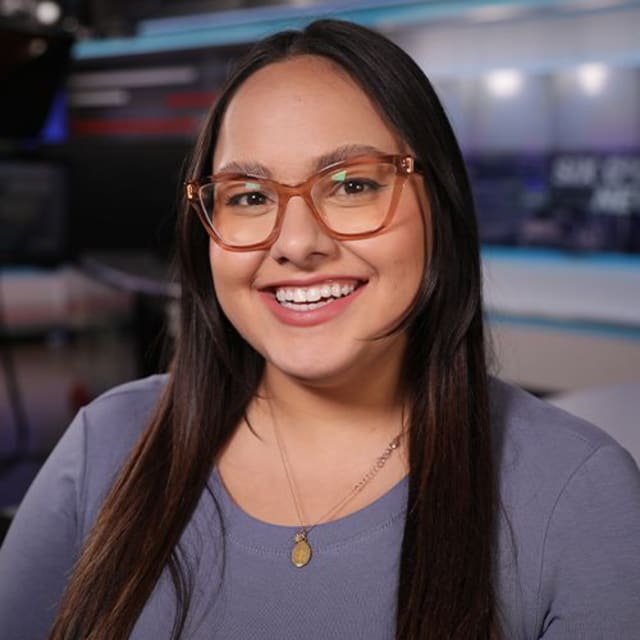SAN ANTONIO – EDITOR’S NOTE-- This KSAT-TV extra was created specifically for the KSAT-TV streaming app. For more exclusive and extended stories download the app on your Apple TV, Amazon Fire Stick, Roku or smartphone.
Many local San Antonio students want to pick up the 2020-2021 school year where the previous year left off-- remote learning.
San Antonio Independent School district was the first to announce plans for its 90+ campuses. The first three weeks of the semester will be conducted online due to concerns over the coronavirus. Parents will have the option to send students back to the classroom after Labor day.
Now, according to a directive issued by the San Antonio Metropolitan Health District, no school district in San Antonio can reopen schools for on-campus face-to-face instruction until after Sept. 7.
Students behind the SAISD student coalition said they don’t feel safe enough to conduct in-person learning and want decision makers to take that into account.
“I would advise all of the school districts to listen to their students and listen to their families and listen to the teachers because the answers lie in us, truthfully,” said Bella Garcia, a 2020 graduate from the Young Women’s Leadership Academy.
Garcia is headed to college in California and will likely do most of her learning from her dorm room. Although she is moving out of state, she’s still concerned about the safety of her family.
“Although it’s kind of not my personal problem... it still is because I have siblings that are gonna be going [to school in the district]. And it’s just generally scary,” Garcia said.
Other coalition members and rising seniors at the Advanced Learning Academy, Julen Navarrete and Aysha Darilek, are also cautious about a campus return because they say their families are high risk. Darilek’s mother already suffers from underlying health conditions and she often helps care for her grandparents. Navarrete is also close to his grandparents and worries about exposure because his mother is a nurse.
“I am very scared for the low-income students that are going to be impacted by the virus,” said Nayeli Aleman, a rising junior at the Young Women’s Leadership Academy.
90 percent of families with SAISD are low-income. The pandemic has shined a light on that disparity since schools closed in March.
“It’s super unfortunate that some districts you do see a digital disparity between districts like Northside. They have that equipment to be able to give out to students. But districts like Edgewood and SAISD truly do struggle to give those things out to their students,” Garcia explained.
According the SAISD Foundation, 60 percent of students did not have access to internet hot spots. The SAISD has made big leaps to combat the digital divide including turning unoccupied school buildings into hot spots and purchasing over 30,000 devices to conduct remote learning.
WATCH BELOW: ‘KSAT Explains: Digital divide in San Antonio amid COVID-19 pandemic'
“Our district was actually doing a really good job about getting the devices out to students, getting hotspots. It was great. But then right now, they recalled all of those,” Garcia said the income gap is still evident when families are required to pay for damaged devices they couldn’t afford in the first place.
While the district is trying to bridge the gap during the school year, Darilek pointed out that lack of technology access during the summer months can also be detrimental to students future. “For me, this is a really important summer to build my resume. I’m in multiple internships and online camps. And if you don’t have the technology for that then you’re put way behind in terms of experience and that’s not fair to low-income students,” she explained.
While these students believe remote learning is the safest option, Darilek is also concerned about the impact that kind of isolation can have on student’s mental health.
“Home isn’t always a safe space for a lot of people. School for a lot of people is the safe space and when you take that away, that is very detrimental,” she said. Darilek said when remote learning began at the end of last year, she felt that resources like counselors were taken away from students. She said no one knew how to contact counselors or trusted faculty members.
“I feel that some students may feel that they are forced to go back into face-to-face school because they depend on school for whatever activities or for food,” said Navarrete.
These students believe in-person learning should resume only when the threat of COVID-19 has calmed. When it comes to who makes that decision, they hope to encourage more young voices to weigh in.
“Students, educators, teachers, parents? We need to be in these conversations. We are going to be the people affected. Don’t make decisions for us. Make decisions with us,” said Melanie Harrell, another coalition leader and 2020 graduate.

